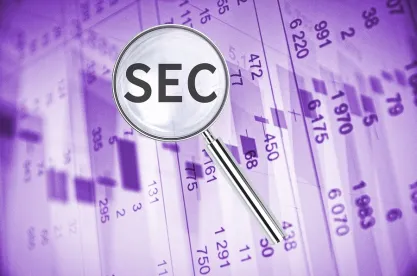On November 17, 2020, the Securities and Exchange Commission (the “SEC”) adopted amendments to certain rules and forms under the Securities Act of 1933, as amended, the Securities Exchange Act of 1934, as amended, and the Investment Company Act of 1940, as amended to allow the use of electronic signatures in the circumstances discussed below. The SEC stated that the amendments recognize the widespread use of electronic signatures and technological developments in the authentication and security of electronic signatures, as well as the continuing need to support remote workforces, and follow a rulemaking petition joined by nearly 100 public companies. The rule amendments will be effective upon publication of the adopting release in the Federal Register.
Currently, under Rule 302(b) of Regulation S-T, “[e]ach signatory to an electronic filing […] shall manually sign a signature page or other document authenticating, acknowledging or otherwise adopting his or her signature that appears in typed form within the electronic filing. Such document shall be executed before or at the time the electronic filing is made and shall be retained by the filer for a period of five years. Upon request, an electronic filer shall furnish to the [SEC] or its staff a copy of any or all documents retained pursuant to this section.”
Under the amendments, a signatory to an electronic filing (including the certifications of the principal executive and financial officers required to be filed with Annual Reports on Form 10-K and Quarterly Reports on Form 10-Q) may sign an authentication document through an electronic signature that meets the requirements that will be set forth in the EDGAR Filing Manual. The existing requirements of Rule 302(b) will be otherwise unchanged. The signing process for an electronic signature must, at a minimum:
-
require the signatory to present a physical, logical, or digital credential that authenticates the signatory’s individual identity;
-
reasonably provide for non-repudiation of the signature;
-
provide that the signature be attached, affixed, or otherwise logically associated with the signature page or document being signed; and
-
include a timestamp to record the date and time of the signature.
The amendments also require that, before a signatory initially uses an electronic signature to sign an authentication document, the signatory must manually sign a document attesting that the signatory agrees that the use of an electronic signature in any authentication document constitutes the legal equivalent of such individual’s manual signature for purposes of authenticating the signature to any filing for which it is provided. An electronic filer must retain this manually signed document for as long as the signatory may use an electronic signature to sign an authentication document and for a minimum period of seven years after the date of the most recent electronically signed authentication document and must furnish a copy of this manually signed document upon request to the SEC or its staff.
When effective, these amendments will help streamline filing procedures, which will be a welcome improvement for public companies.




 />i
/>i

